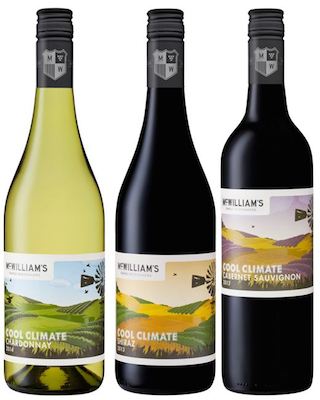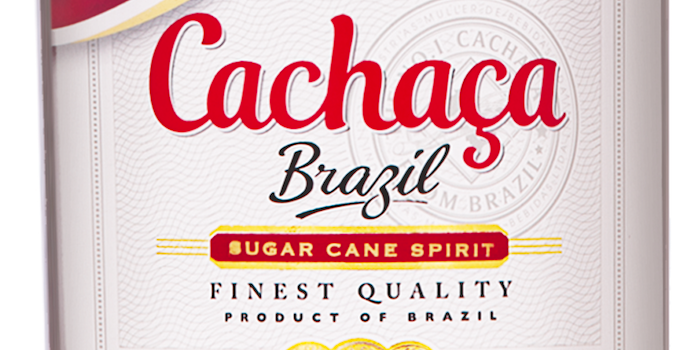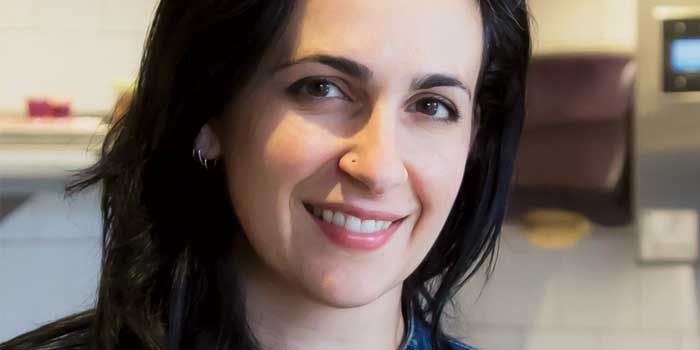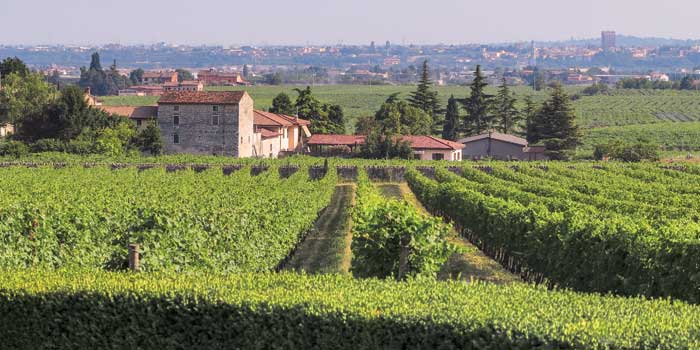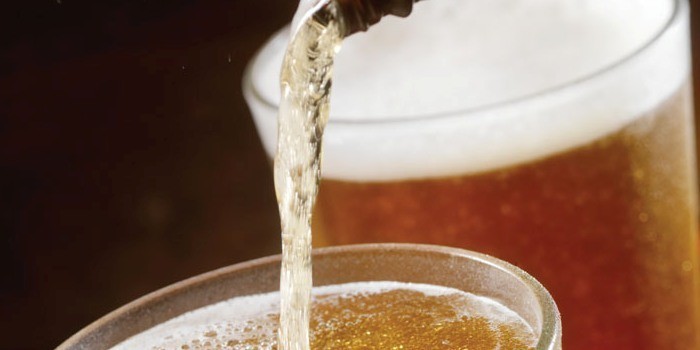Wine panelists review the popular red
We asked members of our panel to taste and rate their favorite merlots. As always, these selections include brief tasting notes, a rating and the wine’s retail price (which can vary from store to store and market to market). If you’re a beverage professional with a specialty in wine and you’re interested in participating in the panel, please contact associate editor Kyle Swartz at kswartz@epgmediallc.com or 203-855-8499 x225.
FIVE STARS
(97) Pahlmeyer Merlot 2012 (California). A real powerhouse of a wine. Dense, nearly purple color in the glass, with dark fruit dominating the nose and palate. Hints of spice follow from the nose to the taste, with great fruit and density. An exceptional wine; a real keeper. ($70)
(96) Long Shadows Pedestal Merlot 2012 (Washington). A partnership with Michel Rolland, this Washington State wine shows power with elegance. Nearly opaque in the glass, the nose is dominated by black fruit, with hints of spice and smoke. Quite weighty on the palate, the finish is long, and superbly balanced. ($60)
(95) Chateau Chamaille 2011 (France). A classic old-style Bordeaux Rouge with 90% merlot, 8% cabernet sauvignon and 2% cabernet franc. Fragrances of lilac and berry mingle with a hint of “la garrigue.” On the palate, flavors of blueberry, plum and spice harmonize beautifully with sweet/tart acidity. Tannins are supple; the finish is long with a subtle hint of terroir. Very nice now; the wine will benefit from three to five years of cellaring. ($18)
(95) Chateau Dorleac 2012 (France). 97% merlot and 3% cabernet sauvignon. Lush floral aromas with hints of flint and soil lead to ripe flavors of blackberry and currant, all surrounded by the famous gravelly terroir of Graves. Though approachable now, the wine’s firm tannins assure several years of rewarding development. This is a wonderful example of Graves Rouge. ($15)
(95) Chateau Sainte Barbe 2011 (France) 70% Merlot and 15% each cabernet sauvignon and cabernet franc, aged 9-12 months in oak. Robust and earthy with bold aromas and flavors of blackberry, currant and vanilla. On the finish, firm tannins show with a good dose of terroir. Pair this with roast beef, lamb or a thick steak. ($17)
(95) Clos Pegase Mitsuko’s Vineyard Merlot 2013 (California). A very dark ruby in the glass, the nose is filled with spiced black and red fruit, with a hint of smokiness. Mouth filling, with lush dark fruit. The finish is long and balanced. ($35)
(95) Shafer Merlot 2011 (California). This wine is a dense purple color, with spice, black cherries and black fruits on the nose. This merlot shines with amazing juicy and chewy flavors of cherry pie and strawberry. With an elegant mouthfeel that presents a lengthy, most enjoyable finish that begs to have another glass. ($60)
(94) Markham Merlot 2012 (California). Dark fruit aroma. Cherry, plum and blackberry flavors. Substantial tannins. Long finish ($23)
(94) Miner Stagecoach Vineyard Merlot 2012 (California). Dark ruby in the glass, the nose is dominated by spicy dark fruit, with just a touch of smoke. The palate is an echo of the nose, with good weight and length. A great combination of power and elegance. ($40)
(94) Neyers Merlot 2011 (California). A deep garnet-red hue, alluring aromas of black cherry, mocha and caramel, lifted by a floral hint. Silky and lush in the mouth, with lovely aromatic perfume to the flavors of cherry, raspberry, flowers, cocoa and dusty spices. A nicely balanced, lovely merlot that finishes with a fine dusting of suave tannins and subtle persistence. This is what merlot should be! ($40)
(93) Chateau Ste. Michelle, Indian Wells Merlot 2012 (Washington). Black fruit with spicy notes dominate the nose of this bright, yet full-bodied wine. Dark ruby in the glass, the palate is elegant, with excellent weight and fruit characteristics. Ready to accompany a wide range of dishes, this is a “go-to” meal wine. ($20)
(93) Chelsea Goldschmidt Merlot 2013 (California). Winemaker Nick Goldschmidt finds that terraced fruit ripens considerably later and brings more complexity and nuance to the finished wine. Stylistically, this is a cabernet drinker’s merlot. Goldschmidt strives for full body and power in the mouth, with wood behind the fruit. The wine has fresh black raspberry, cedar and toasty vanilla aromas, with cherry, black currant and spice flavors. ($19)
(93) Columbia Crest H-3 (Washington). Outstanding wine and value. Rich with ripe red raspberry and dark chocolate. Long intense finish. An elegant mouthfeel full of luscious flavors that keep on evolving. ($15)
(93) Hall Merlot 2012 (California). Deep and rich in color, this wine has aromas of cherry, violets and cocoa, leading to an elegant mid-palate with flavors of dark cherry, blackberries and some toasted oak. This is just a lovely, supple, soft merlot from one of Napa’s best “new” vineyards. ($37)
(93) Markham Vineyards Merlot 2013 (California). Dark ruby in the glass, the nose is dominated by dark berry fruit, with a touch of plum. Hints of spice and chocolate contribute complexity. The wine is lush and full-bodied, with a balanced finish. ($25)
(93) Neyers, Neyers Ranch-Conn Valley 2012 (California). This fabulous merlot is farmed organically and flaunts pure notes of boysenberry, cocoa and dusty minerality with great floral lift. Seamless and long on the palate, a real pleasure to drink. ($31)
(93) St. Francis Reserve Merlot 2012 (California). Black and red fruit explode from the glass, with hints of cocoa and spice. A very dark ruby, the wine has great fruit and weight in the mouth. The finish is extremely long, and balanced to the very end. ($40)
(92) Columbia Winery Merlot 2013 (Washington). Quite a dark ruby color to the eye. Lots of red fruit, with hints of spiciness and toast. Lots and lots of red fruit on the palate, with good weight and breadth. A very food-friendly wine; try it with a wide range of dishes. ($17)
(92) Franciscan Estate Merlot 2012 (California). Dark ruby in the glass, with purple hints. The nose is filled with sweet cherry and red fruit. Plenty of dark fruit in the mouth. Good weight, and a lengthy, well-balanced finish. ($21)
(92) Matanzas Creek Winery Merlot 2012 (California). This Sonoma County merlot is absolutely delicious. Plums, blueberries, black cherries, mocha, bittersweet chocolate and stones emerge from the glass in a deeply expressive, balanced wine loaded with personality. Drink this plump, juicy merlot over the next handful of years. ($25)
(92) Osso Anna Merlot 2012 (California). Complex with a lot of structure, and as it begins to break down, the luscious fruit starts to release. Layers of flavor that keep offering different hints of light cherry, berry fruit and even a hint of plum. This is a merlot lover’s dream. ($23)
(92) Peju Province Merlot 2012 (California). Dense ruby to the edge of the glass. Plenty of black fruit, with a touch of plum, spice and vanilla. The wine has superb length and balance on the finish. ($35)
(92) Poliziano “In Violas” Merlot 2011 (Italy). Blackberry, black licorice, clay and earth tones with hints of cinnamon and leather. Juicy mid-palate with more sweet dark fruit on the finish. ($22)
(92) Santa Ema Reserve (Chile). Plums, currants and blackberries with hints of dark chocolate arise from your glass. Easy tannins with a touch of spice. Balanced and medium-bodied. Would hold up to grilled meats. ($15)
(92) Stags’ Leap Merlot 2009 (California). A dry, ageable red with fine tannins and beautiful complexity. Drinking beautifully now, and should age nicely. ($40)
(92) St. Supery Rutherford Estate Merlot 2012 (California). Very, very dark ruby in color. The nose and palate are rich with black fruit, with coffee and spice hints. Quite weighty on the palate, the fruit shines through with excellent structure. An outstanding finish. ($50)
(92) Whitehall Lane Napa Merlot 2013 (California). A delicious merlot bursting with blackberry, dark cherry, plum and red currant flavors. The mid-palate is lush and full, giving way to a touch of mocha and finishing long with a hint of spice. ($22)
FOUR STARS
(91) Bogle Merlot 2013 (California). Consistent performer on price and quality. Easy drinking with ripe dark cherry. A “go-to” wine that’s perfect for everyday meals from burgers to pizza to poultry and red meats. ($10)
(91) Cadence Coda Red Mountain 2013 (Washington). An intensely concentrated merlot that delivers opulent dark fruit, chocolate, coffee, spice and cedar. The flavors blend together on the palate to create a savory, rich profile that’s nearly irresistible. The finish is long, with lingering notes of dark plums. ($37)
(91) Camaraderie Cellars Merlot 2010 (Washington). Full of bold flavors of dark cherries, dark plums, baking spices and vanilla-laden oak. The upfront richness is balanced by a well-structured, crisp finish laced with fine-grained tannins. ($25)
(91) Chateau Laville Bordeaux Superieur 2012 (France). A blend of 75% merlot, 25% cabernet franc. After a year in oak, you get a seamless, silky merlot with a nice touch of spice to accompany ripe cherry notes. A classic, elegant style with a touch of an earthy edge providing character and complexity. ($17)
(91) Chateau Picau-Perna, Saint-Emilion, 2012 (France). This Right Bank Bordeaux sings with cherries, blackberries and even coffee beans on the nose. This wine has a lot of plum concentration in the mouth, with soft tannins and good acidity. The finish is somewhat complex, with more coffee bean flavors intertwined with dried figs. ($20)
(91) Chelsea Goldschmidt Merlot 2013 (California). This merlot has amazing structure and fruit. Lingering, yet subtle berry fruit flavors give this wine that extra little pop of energy and provide for a satisfying finish. The acidity and tannins do not fall off, yet are not overpowering, adding the balance to make this merlot a must-have. ($17)
(91) Duckhorn Merlot 2012 (California). Aromas of black tea, smoke, pomegranate and vanilla bean. A sleek textured wine with finely grained tannins on the extended finish. ($50)
(91) Gainey Vineyards, Merlot 2011 (California). Chocolate and toasted oak on the nose, with enticing scents of cassis, wild cherry and dried herbs. Contains lush black currants and blackberry flavors throughout the mid-palate, finishing with a velvet touch in your mouth. ($20)
(91) Gordon Estate Merlot 2012 (Washington). A wine that showcases why Columbia Valley merlots are so critically acclaimed: aromas and flavors of plums, cedar, spice and vanilla are woven together in the graceful, nuanced finish. ($30)
(91) Gordon Estate Merlot 2013 (Washington). Ruby, with garnet hints. The nose is filled with concentrated black fruit, with sweet spice notes. The palate has great weight, with plenty of dark fruit. The finish lingers, with good balance. ($25)
(91) Milbrandt The Estates Merlot 2011 (Washington). Earthy aromas of ripe plum and herbs with flavors of black cherry and blueberry, leading to a silky finish with hints of vanilla and toast. One of the best of Washington’s mid-priced merlots. ($25)
(91) Monticello Merlot Estate 2013 (California) An elegant Napa Valley merlot brimming with nuanced flavors of blackberries, red plums, smoke, dark chocolate and cedar. It impresses for its expansively rich texture and lengthy finish. ($37)
(91) Pepper Bridge Merlot 2012 (Washington). Substantial yet elegant. This wine possesses concentrated elements of blackberry, black cherry and bitter chocolate, with a touch of tobacco. ($58)
(90) Benziger Merlot 2012 (California). Bright cherry with a touch of spice and vanilla. Medium bodied, with a smooth creamy finish. ($16)
(90) Bridgman Merlot 2013 (Washington). An enticing merlot that showcases a complex medley of raspberries, smoke, espresso, sweet vanilla and cocoa. The velvety smooth texture on the finish is simply delicious. ($19)
(90) Casale Del Giglio 2012 (Italy). Sits 8 to 12 months in small oak barrels, bringing out scents of red berries and black cherry. The herbs, exotic spices, leather and tobacco make for a complex merlot. The velvety finish and cracked pepper are perfect with a bowl of pasta carbonara. ($11)
(90) Chateau Ste. Michelle Indian Wells Merlot 2012 (Washington). This merlot offers rich, concentrated flavors of wild berry, blueberry, dark plum and cassis. A jammy style with a round mouthfeel and a delicious supple finish that lingers nicely. ($20)
(90) Courtney Benham Merlot 2014 (California). A strikingly bold merlot with black cassis, oak, spice and dark chocolate on the palate. A “must try” for any fan of rich, well-structured merlots. ($21)
(90) D’Autrefois Merlot 2013 (France). A surprisingly complex wine with aromas and flavors of raspberries, cherries, baking spice and floral notes. It finishes soft, with pleasant tannins and lingering notes of plums. ($13)
(90) Debeaune Spec Select Merlot 2013 (France). Fruit-forward and plush, this merlot possesses aromas and flavors of cherry, currant and vanilla. It is supple, plush, and easy to drink. ($12)
(90) Kestrel Merlot 2012 (Washington). Fragrant and expressive, with aromas and flavors of blueberries, baking spices, pepper and sweet vanilla. It showcases its famous Yakima Valley pedigree in the well-structured, balanced finish. ($23)
(90) Le Vigne Kiara Merlot 2010 (California). This is a smooth and gentle merlot with loads of plum and cherry and notes of red currant and vanilla leading to an elegant finish. ($18)
(90) Luc Pirlet Merlot 2014 (France). An intense and surprisingly bold merlot with concentrated blackberries, oak, spice and plums. There is weightiness to the palate that imparts a rich texture to the flavors. It finishes smooth and velvety. ($13)
(90) Milbrandt Vineyards Traditions Merlot 2012 (Washington). Dry and medium-bodied, with complex black fruit notes and a long finish. An exceptional value, vintage after vintage. ($16)
(90) Montoya Merlot 2013 (California). A velvety merlot with vibrant flavors of red cherries, dark plums, spice, and oak. A highly enticing wine that is smooth and soft from start to finish. ($18)
(90) Mouton Cadet 2012 (France). Bright, deep ruby in the glass. The nose is bight and fresh, with red fruit dominating. The palate follows the nose, with good structure and hints of spice. A bargain. ($11)
(90) Neethlingshof Merlot 2013 (South Africa). A velvety smooth merlot with supple flavors of blueberries, dark plums, kirsch and spice. Its profile features gentle tannins and a delightfully crisp finish. ($18)
(90) Wildhaven Merlot 2013 (Washington). Supple aromas and flavors of dark fruit, spice and vanilla are woven together in the wine’s plush texture. It finishes soft, with gentle tannins providing structure. ($15)
(89) Anakena Merlot 2014 (Chile). A fruit-forward, plush merlot with fresh plum, raspberry and vanilla flavors. The gentle finish is smooth and round with light notes of spice. ($11)
(89) Columbia Crest Grand Estates Merlot 2012 (Washington). Loaded with flavors of black cherry and chocolate, with a nice velvety finish. This wine has made many end-of-year top-100 lists. ($10)
(89) Domaine de Couron, Ardeche 2013 (France). What this lacks in complexity it makes up in sheer drinkability. Ripe plums, espresso and thyme are nicely tied into a medium-bodied frame with a splash of cleansing acidity. ($11)
(89) Franciscan Merlot 2012 (California). Cherry nose. Cherry, cassis and chocolate flavors. Mediums tannins. Nice, fairly long finish ($20)
(89) Frei Brothers Merlot 2013 (California). A beautiful fruit bomb, yet controlled in a way that offers wonderful sophistication. The initial taste offers berry fruit with a slight explosion of blackberry. Everything comes together for the finish into a very rich and savory wine. ($20)
(89) Pedroncelli 2012 (Sonoma, CA). A lovely, gracious merlot from the Pedroncelli Family Winery. Bright red plum, herbs, ripe tannins, along with a smooth finish and bouquet of blackberries make this a great afternoon sipper as you munch on a hunk of aged Gouda. ($14)
(89) Reserve St Martin Merlot 2014 (France). A soft, gratifying merlot with delicious red plum, cherry and spice notes. it finishes soft and round with no hard edges. ($12)
(89) Toad Hollow Merlot, Richard McDowell Vineyard 2012 (California). Cherry aroma. Cherry, cassis and plum flavors. Fairly tannic. This is a cabernet drinker’s merlot. A good buy. ($13)
(88) Cono Sur 2013 (Chile). A nose of black fruit and toasted oak leads to ripe tannins and intense fruit. A merlot with excellent structure and balanced acidity. Drink it young and enjoy it with a plate of pâté. ($10)
(88) Jason Stephens Estate Merlot 2010 (California). A big, rich red that is the antithesis of merlot’s sappy reputation. ($18)
(88) Radius Merlot 2013 (Washington). Dark plum and sweet cherry combine with the silky texture to create this lush merlot; finishes smooth and plush with additional notes of vanilla and raspberry. ($12)

